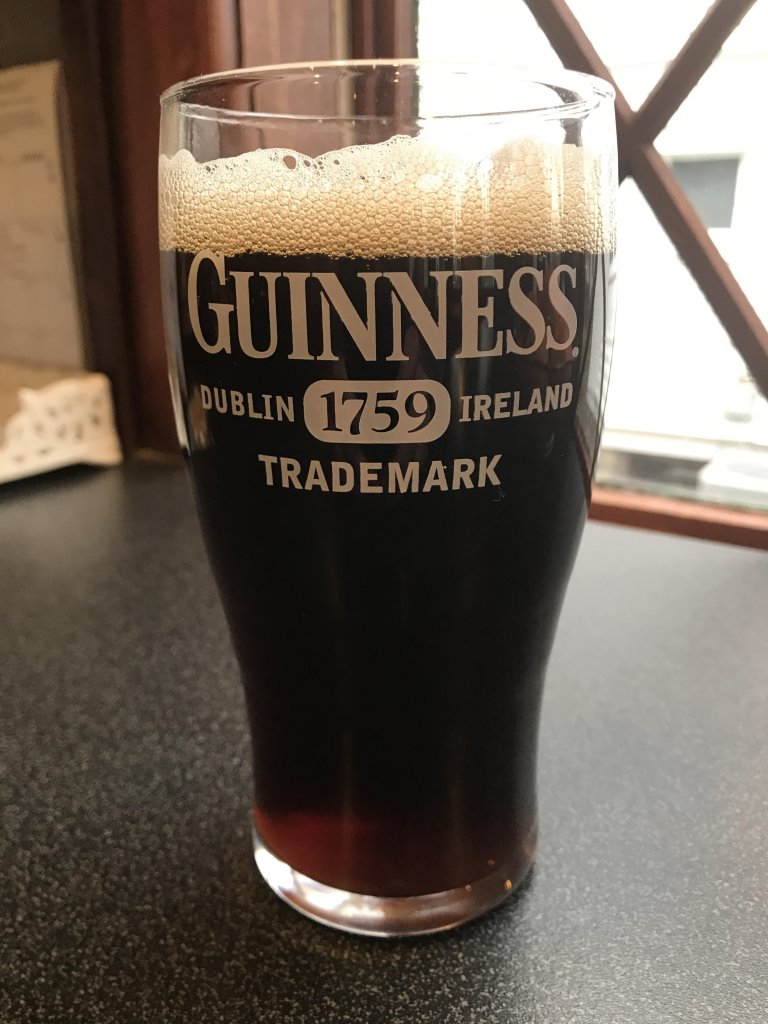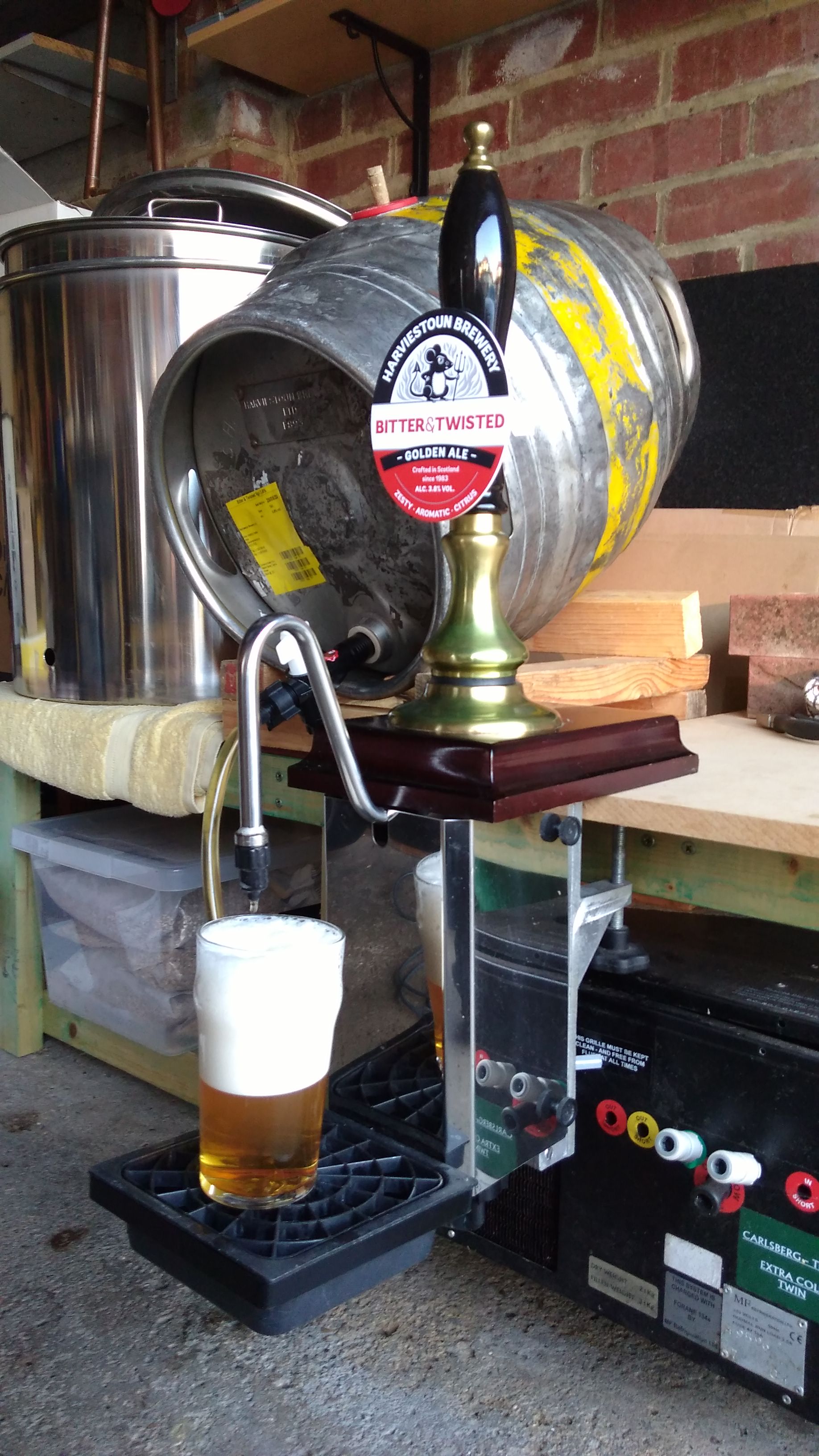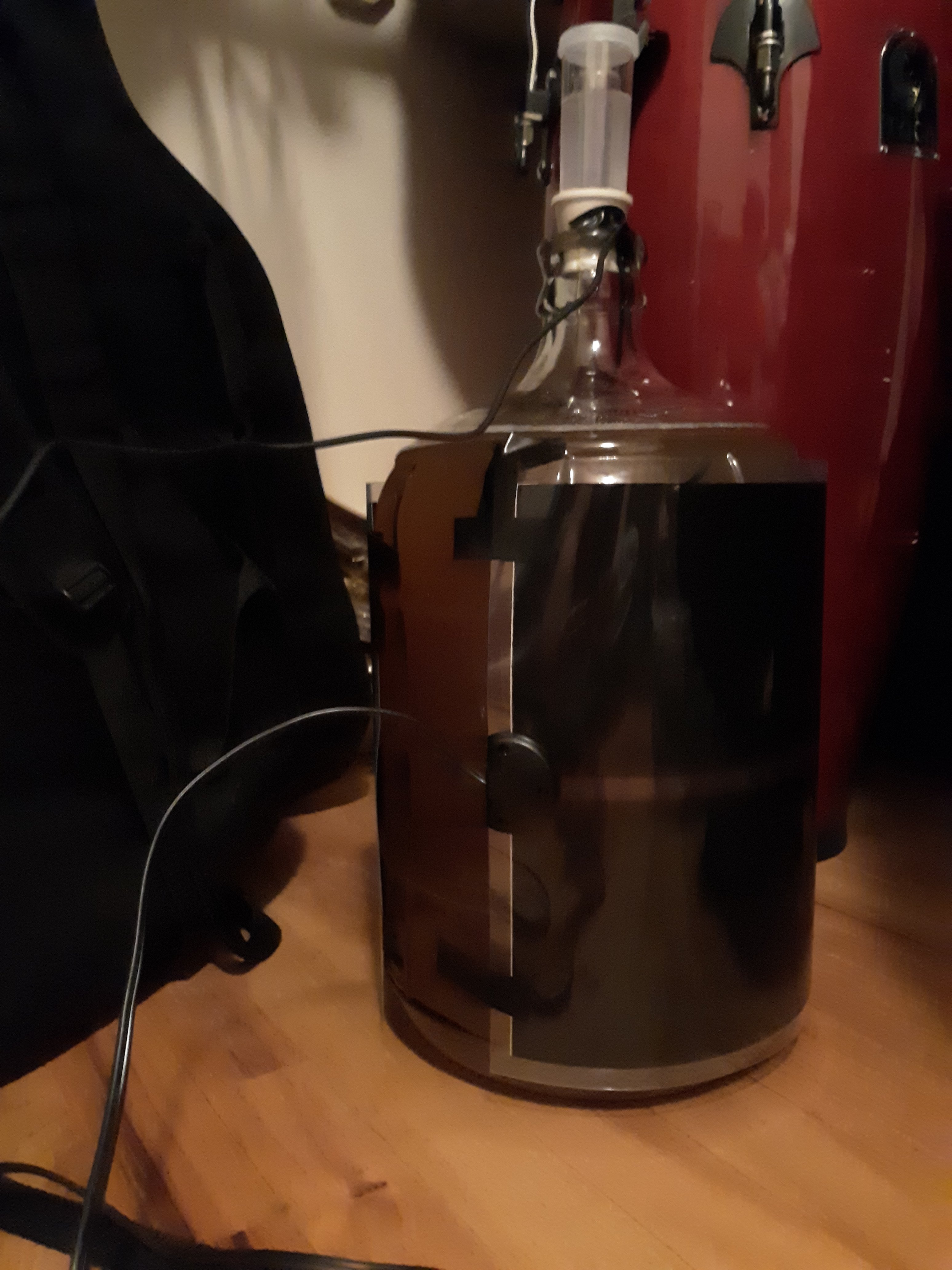Sorry about the mess, but the picture does show a SS firkin sat on my fermentation bench. The tap is seen behind the swan neck of the beer engine driven into the plastic keystone. The barrel is inclined as its contents were low. Even so, the beer can be seen to still be live. At the top and middle of the barrel can be seen a hard wood spile driven into a shive. Being solid it reduces CO2 loss between sessions if driven home. A porous soft spile can be fitted if the beer is too lively to slowly vent excess CO2.
A cask is placed on stillage to allow yeast and finings to settle. When thought ready, a spile is hammered into the shive, releasing excess pressure. A lively cask can be given more time or fitted with a soft spile. The tap is knocked into the keystone and beer sampled. If the beer isn't ready a hard spile is fitted until it is. To serve, the spile is slackened or removed, the tap opened and the beer drawn through by a beer engine. A beer engine is essential to enjoy ale at its best.
View attachment 673533























































![Craft A Brew - Safale S-04 Dry Yeast - Fermentis - English Ale Dry Yeast - For English and American Ales and Hard Apple Ciders - Ingredients for Home Brewing - Beer Making Supplies - [1 Pack]](https://m.media-amazon.com/images/I/41fVGNh6JfL._SL500_.jpg)









